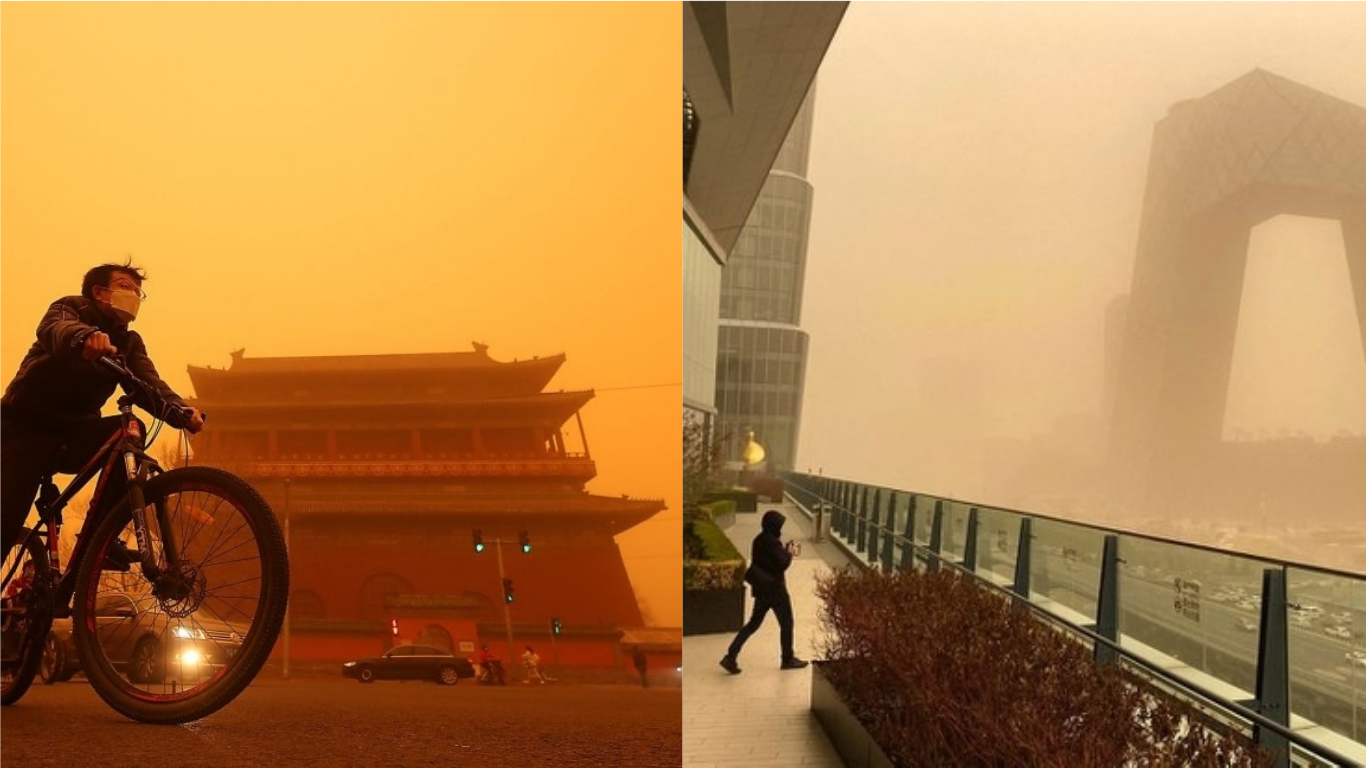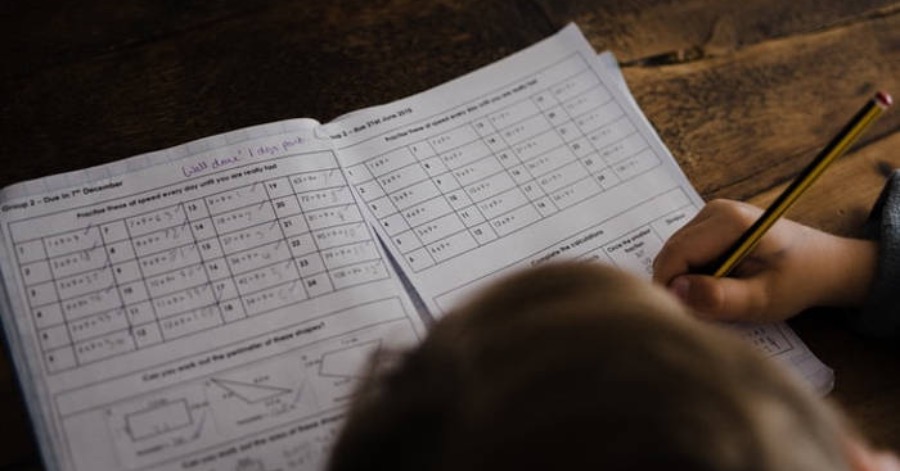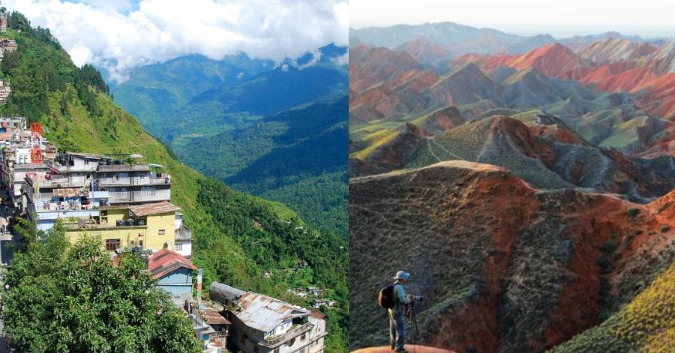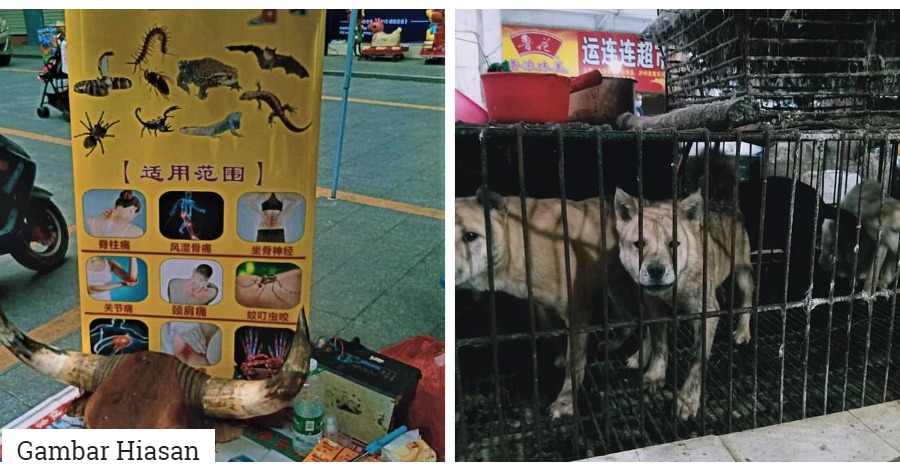A massive sandstorm with Beijing’s already high level of air pollution turns Beijing into an eerie reminiscence of the game Silent Hill – but with an orange tint.
Chinese meteorological authorities issued its second-highest alert level shortly before 7.30 am, staying in place until midday. Commuters traveled to work through the thick, dark air across China’s capital and further west.
The real-time air quality index (AQI) showed a reading of 999. Levels of PM2.5, the small air pollution particles that infiltrate the lungs, were recorded above 600 micrograms in many parts of the city, reaching a 24-hour average of 200 before midday. The World Health Organization recommends average daily concentrations of just 25. The sandstorm blown in from the desert stretching into Inner Mongolia saw concentrations of the larger PM10 particles surpass 8,000 micrograms according to state media.
Despite the steps Beijing has taken to reduce pollution with a “great green wall” of trees to trap incoming dust and air corridors, it stands no chance against the sandstorm and the rapid increase of pollution.
Residents in Ningxia said they woke feeling they couldn’t breathe.
#Sandstorm hits Beijing amid morning rush hour, have not seen this in past ten years. pic.twitter.com/FTUfw2Zxe1
— Shen Shiwei 沈诗伟 (@shen_shiwei) March 15, 2021
Sandstorms also hit neighboring Mongolia causing flights grounded out of Hohhot in inner Mongolia. 341 people were also reported missing.
Sandstorms are relatively common at this time of year. However, long-term residents said they had not seen one of this severity in years. Winds blowing across the Gobi desert, much like what Malaysia experience with the annual haze but much worse.
Another contributing factor is the deforestation and just high air pollution in the city with transportations.
Source: The Guardian









Leave a Comment